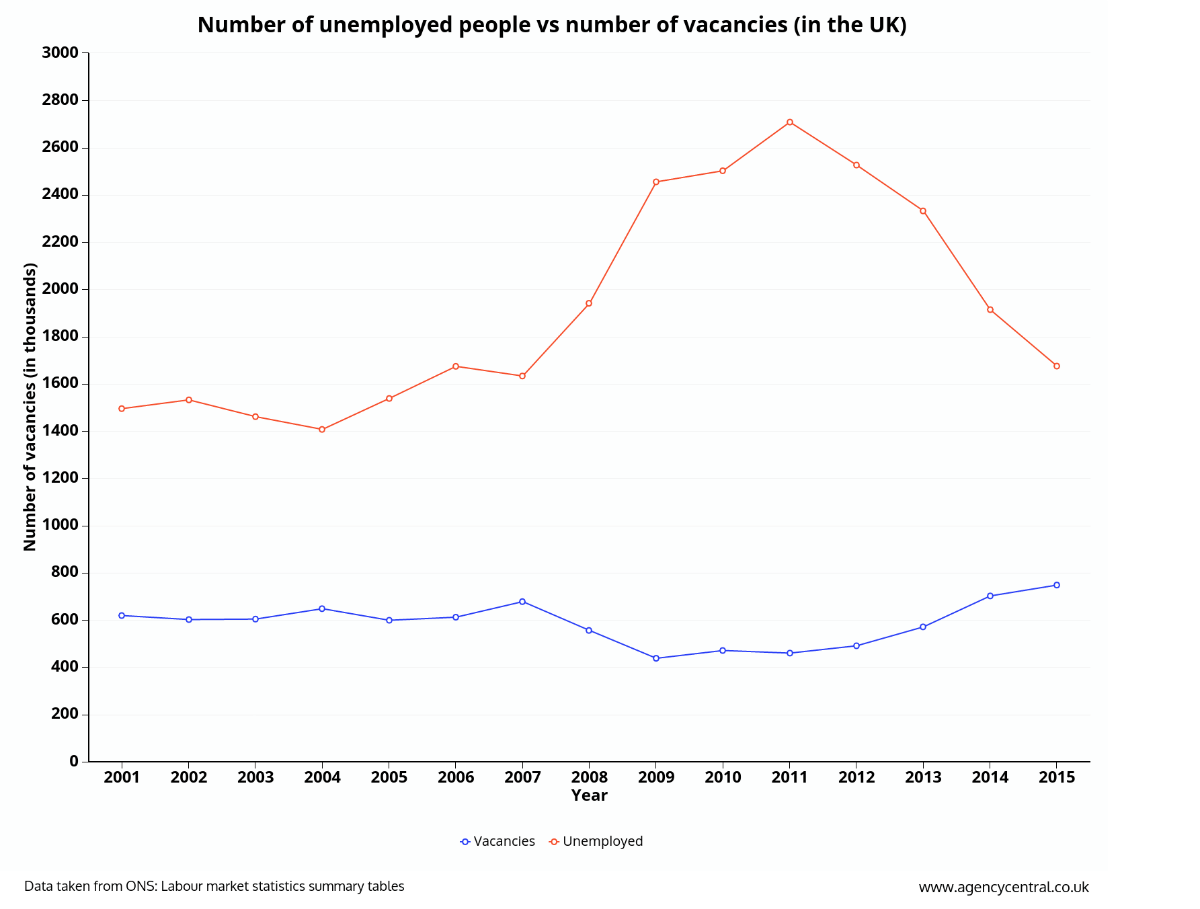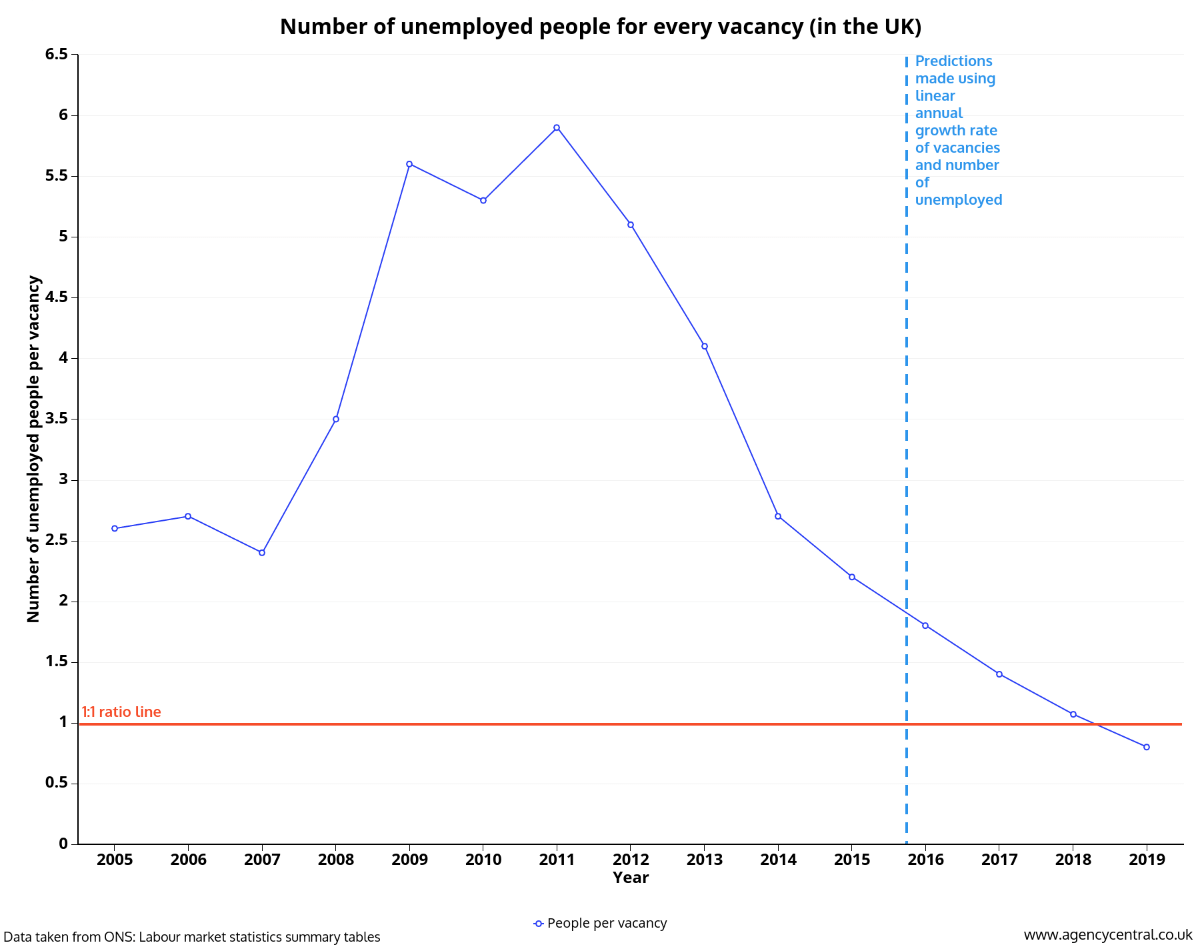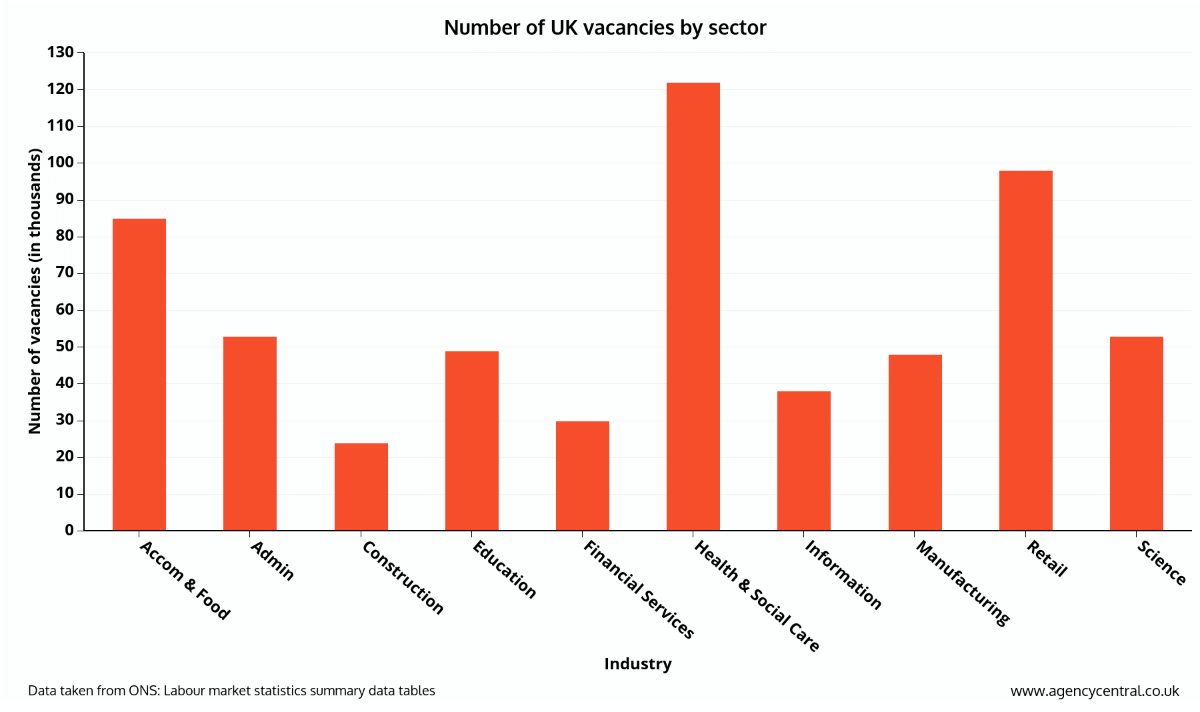With the UK currently in the midst of a much-publicised skill shortage, recruiters and recruitment agencies are having to rethink their tactics in order to attract the most in-demand professionals on the market. Skilled candidates are *supposedly* becoming increasingly hard to find and the recruitment industry is under pressure to meet employer demands and aid economic growth. But just how can recruiters cope with such a shallow talent pool? And is that pool really so shallow?
Are recruiters experiencing a skills shortage?
The terms ‘talent shortage’ and ‘skills crisis’ have firmly established themselves amongst the modern day recruitment lexicon, but can the market really justify this new buzzword status? With all the blog posts, newspaper headlines and LinkedIn posts convincing us of candidate extinction, it can be difficult to see the fire through the thick wall of smoke – so let’s open a vent on the whole issue.
The numbers
Before we can fully understand the scale of the candidate shortage, we should first compare the number of current vacancies and the number of people who are unemployed. This is a simplistic method of allowing us to see how many people are available for each opening, irrespective of skills or qualifications.

According to an ONS Vacancy / Labour Force Survey, there were 748,000 vacancies existing between September and November 2015 (the latest complete figures). As the graph above shows, this is the highest number of vacancies in the past 15 years and a figure that has consistently risen since 2011. This is 74% more than the survey’s lowest number, which occurred during a recession hit Britain in 2009.
During this same two month period, there were an estimated 1.67 million people out of work – resulting in an unemployment rate of 5.1%. Although this is the lowest rate according to ONS data, the actual number of people out of work is still higher than pre-recession levels.
While all of this is so far looking great for candidates, the fall in unemployment and growth in staffing requirements can prove tricky for recruiters. Though recruitment is often about attracting the demand, if you can’t provide the supply, then there’s a big hole in your business plan.
So what does all of this really mean? Well in a nutshell, the number of unemployed people for every vacancy is falling.
As it stands, there are currently 2.2 unemployed people for every job vacancy in the UK. This is the lowest ratio of the 21st century and a figure that has been continually falling since it’s peak of 5.9 in 2011 (that’s 5 years ago, for those that no longer have a grasp of the calendar).

Admittedly, trends seldom remain constant, however we’ve decided to work out the point at which there would be fewer people than vacancies, SHOULD the decline remain steady.
If current trends continue (and we adopt an annual linear growth rate), the year when the people per vacancy ratio would drop below 1:1 is 2018. At this stage, there would be 0.8 people per job, or only 1.1 million people for 1.3 million vacancies. Of course, this consistent trend is pretty improbable, but still interesting nonetheless.
What about skill-mismatching?
Despite figures suggesting that more people are finding work, this doesn’t account for those who aren’t suitably skilled for the job that they already occupy. About 5% of the workforce (1.5 million workers) are thought to be under-qualified for their job role, resulting in a drop in company efficiency, productivity and the ability to move into new markets.
Skill-mismatching can be the result of poor and / or desperate recruitment. If the pressure is high to find a candidate, it’s not so unbelievable that thorough assessments aren’t 100% adhered too. Additionally, if the skills just aren’t on the market, then employers may simply be left to take on the next best talent available – even if they’re not ideal.
Of course, no recruiter worth their salt will put a candidate into a position where their skills are mismatched. As Dee Spencer, Senior Consultant at Remedy Recruitment Group Ltd, said: “We can’t mismatch as the client just won’t take them on. It’s up to us to let the client know our candidates can do the fundamentals of the role.”
Unsurprisingly, there are more workers being under-utilised in their careers and the Employment Skills Survey (ESS) showed that 4.6 million employees are overqualified for their job. A CIPD report into skill-mismatching, suggests that over-qualification is a particular problem within the graduate market. According to the report, 58.8% of graduates are employed in non-graduate positions. This is the third highest number in Europe, only behind Greece and Estonia.
Which industries have the biggest shortage of candidates?
Not all skill shortages are created equally and some industries have a greater lack of suitably skilled candidates than others. While multi-sector recruiters will therefore hope that the demand across all sectors will average out, niche / specialist consultants may feel the pressure a little more.
Which industries have the most vacancies?
Although there’s a difference between which industries require the most candidates and which industries have a skill shortage, it’s worthwhile seeing just where the vacancies are.

The graph above shows which sectors had the highest number of vacancies – as of December 2015). As we can see, healthcare had the largest amount of job openings at 122,000, while construction only had 24,000.
While this data would suggest that the greatest candidate shortage is in healthcare, it’s important to consider that the need for staff may be as a result of a larger demand for services (which can be met by the number of qualified staff).
For instance, retail was said to have 98,000 job openings prior to Christmas, however many of these will be temporary or contract positions and will be suitable for a wider pool of people. Thus, there isn’t so much a shortage of retail staff, as there is a need to address seasonal needs. Manufacturing on the other hand, had less than half the number of vacancies at 48,000, however there are significantly less qualified candidates for more technical roles.
So where are recruiters finding candidate shortages?
From a general dearth of STEM (Science, Technology, Engineering and Maths) skills to a demand to meet public sector needs, skill shortages are prevalent across a diverse range of sectors. But where is talent particularly lacking?
Digital / IT
Developing technologies are one of the leading causes of skill shortages and mismatching, so it’s therefore unsurprising that IT and digital disciplines can be particularly tricky to recruit for.
As a proportion of GDP, the UK has the largest internet-influenced economy of the G-20 countries and digital / IT recruitment is set to be the greatest of all sectors by the end of the decade. The rise in demand, though in one way a blessing for recruiters, is causing a talent headache. In the 2014 / 2015 academic year, there were 63,470 Computer Science undergraduates, however it is estimated that an additional 766,000 digital jobs are to be created by 2020. This, when combined with the fact that computer science graduates have the highest unemployment rate of all degree types, suggests that there will be a substantial skill deficit for technology-related jobs.
Construction and engineering
Skilled trades such as construction and engineering are also creating a recruiting nightmare, as the market struggles to recover from a recession caused decrease in graduate hires. During the recession, the number of apprentices and graduates taken on by construction firms fell dramatically as a result of the struggling economy. This means that there aren’t now enough workers to cover the demands for growth in infrastructure. The construction skill shortage is very real and professionals such as quantity surveyors, plumbers and project managers are highly sought after.
Healthcare
As we’ve already seen, care / health has the highest number of single industry vacancies at 122,000. This has grown by 13% since 2014 and is currently at it’s highest since prior to 2001. According to the UK Commission of Employment and Skills, the average age of the care workforce is 50-65, creating a recruitment demand to replace retiring professionals. This isn’t helped, when we also consider the ageing UK population and the greater strain on resources. This is particularly difficult for recruiters as seemingly low pay, long hours and negative newspaper headlines have made the sector less attractive to would-be new entrants.
And the rest…
As unemployment falls, the need for HR and recruitment professionals rises. The UK recruitment sector is worth more than £26 billion and is continuing to grow. This means that experienced recruiters are in demand and the Rec2Rec market is particularly buoyant.
Conversely, the education sector is struggling to attract new entrants and the shortage of qualified teachers is set to rise as pupil numbers do likewise. The subjects with the largest requirement for trainee teachers includes social studies and business studies, where there is expected to be an 85% shortfall in the numbers needed. Design and technology related topics are also suffering a lack of new candidates.
The food & drink manufacturing sector will require 109,000 staff over the next decade in order to meet government targets. Food & drink is the largest field of manufacturing in the UK and is worth more than £96 billion. The greatest talent shortages are senior roles within science and development, however there is thought to be a need for nearly 50,000 production staff.
What are recruiters doing to tackle the shortage?
So the big question is just exactly how, as a recruiter, do you cope with a shortage of candidates? Well unfortunately, we can’t give you a fool-proof guide to talent shortage survival, but we can give you some key pointers to help optimise your recruiting potential.
Networking
With the number of active job seekers falling, simply knowing the right people is becoming ever more important for recruiters. Networking has always been considered a key recruitment trait, however modern social media methods aren’t always as effective when the competition is crowded and the shrinking talent pool is disengaging.
When there are limited resources, a recruiter is only as good as their contacts. These people can provide insight, referrals and help give you a headstart over competitors.
Unsurprisingly, the more brands and professionals that invade social feeds or inboxes, the more likely that users will become desensitised to a recruiter presence. Although social media has always been built on the idea of ‘communication’ and ‘relationships,’ these don’t always promise a meaningful connection.
Luke Todd, Recruitment Director at LTR Executives agrees, stated that: “Recruiters who think they can sit behind a computer and message all day long don’t have the personal touch which is built from phone and face to face meetings. One phone call or meeting is better than a thousand messages.”
With this in mind, it might be worthwhile to revert back to more traditional methods of networking. When there are limited resources, a recruiter is only as good as their contacts. These people can provide insight, referrals and help give you a headstart over competitors. 10 personal relationships will arguably offer more value than 100 social media connections and are likely to deliver longer term benefits.
Personal branding
One of the best ways to fill the pages of your contact book is to build your personal brand. Having a strong image in the recruitment market will allow you to attract new candidates and limit the amount of blind talent chasing.
Even if you work for an agency, the brand belongs to you (or the people you employ).
Although a few flash successes can help build an initial reputation, brand building is a long term project that never really has a completion date. Remaining active in the market for a significant period of time enables you to build a level of credibility and credence that is important when looking to attract hard to find candidates.
Luke Todd, said: “Continuity of employment creates a stable business and a profile for candidates / clients to know and trust you as a market leader in your chosen area of recruitment. This sounds basic, but do the basics well and the rest will fall into place.”
Trust can go a long way in recruitment, as candidates are more likely to engage with people than companies. Around 75% of the employment market is made up of passive candidates, and in times of a skill shortage, it’s likely that you’re going to have to tap into this talent pool to satisfy clients. A strong profile, be it online or in person, can be used as a way to differentiate yourself from competitors and start a conversation with these potential applicants.
Explore new social media platforms
While social media may not promise the personal connection of a face to face meeting, LinkedIn et al. are still an important method of reaching out to a vast talent pool and a key method in how people find a job. Unfortunately, every recruiter and their dog uses social media to scout out talent (and for good reason!) and this has led to competitive platforms.
With Facebook, Twitter and LinkedIn being well trodden-paths, it can pay for recruiters to look for alternative social avenues. Developing a presence in a less crowded marketplace can help you stand out and find candidates that others may not have access to.
So what social media channels should you explore?
There’s no one size fits all approach to social recruiting, but some of these social networks could help give you the upper hand of other recruiters.
Instagram
Even though it’s now a firm social media favourite, recruiters are still wondering how they can make the most of Instagram. The photo sharing service has more than 14 million monthly users in the UK and is an underutilised method of engaging with Generation Y. One of the most effective ways of attracting passive candidates is to sell your story, and as the old adage goes, a picture paints 1000 words. Instagram is ideal for this and giving users a ‘behind the scenes’ look at your profession (or even just a few inspirational quotes) will help establish you as an Insta-brand.
Developing a presence in a less crowded marketplace can help you stand out and find candidates that others may not have access to.
‘Likes’ and ‘comments’ from other users will enable you to scope out those who may be interested in you, while keyword searches can help you find people that are passionate about a certain field.
Pinterest
Pinterest is another visual platform that is often ignored by agencies and consultants. Similar to Instagram in some respects, Pinterest is a multimedia sharing site that has more than 10 million monthly users. Although it’s often regarded as one of the more personal social networks, a recruiter presence can still be leveraged to find passionate candidates.
For instance, creating a board that relates to a job role or topic will enable you to be found by people that are passionate about that area. ‘Pinning’ good visual content may then encourage these same people to follow you, thus providing a list of potential candidates. Combine this with appropriate linking and staying ‘trendy’ and you could find yourself with a largely unexploited talent source. Of course, very few Pinterest users will be using the platform to actively find work, but this doesn’t mean that they won’t engage with you if you’re pushing something that they’re passionate about.
Industry forums
Slightly away from traditional social networks, industry specialist forums offer a great resource for finding specifically skilled candidates. These online communities provide a little corner of the web for people of a certain profession to gather and discuss all things to do with that field. In fact, some of you may already be members of recruiter groups and do the same.
Now it has to be said, a lot of online communities will not always welcome a recruiter trying to pick up candidates, however this isn’t the case across the board. If you’re looking for IT staff for instance (think developers, technicians and HTML gods), forums are an excellent concentration of skilled professionals. Again, many of these will be passive job seekers, if seeking at all, so being able to leverage a strong recruiter brand will help.
What about attracting reluctant applicants?
As with any commodity, if there’s a shortage, the value goes up. This certainly applies to recruitment and skilled candidates know their worth in a market that is constantly looking for a glimpse of something shiny in the void.
This means that trying to attract in-demand professionals from one position to another can be an arduous endeavour, especially if the financial reward is at a minimum. Luke Todd, said: “Top candidates know their value, so trying to get them a £10,000 raise to move can often be a difficult task. This is something that we have to get around to be successful.”
This is where you have to balance the fact that you’re working on behalf of the employer, but also need to develop a personal relationship with the candidate. A candidate will be reluctant to engage with you if it seems like you’re batting solely for the client, however…you have to swing for the pay cheque. Things can therefore become especially tricky during salary negotiations, so be careful not to alienate either party.
What have we learned?
So it appears that recruiters are indeed having to contend with a candidate shortage and that relationships are key to helping the industry overcome potential shortfalls.
Key points:
- The number of unemployed people for every vacancy in the UK is falling. The figure is currently 2.2 people per vacancy.
- Skill mismatching is a problem, with 1.5 million people under-qualified to perform their present job role. Conversely, 4.6 million people are over-qualified.
- Digital, Construction and Care sectors are suffering the biggest shortages of talent.
- Recruiters will have to up their networking skills in order to cope with the pressures. Relationships are king.
- Less conventional social media platforms, such as Pinterest and Instagram, offer less competitive markets.
Regardless of the environment, quality recruitment remains the key to quality hires. Even though the candidate shortage provides a barrier to sourcing top talent, a multi-faceted approach to recruitment remains the most effective method of filling vacancies.
We would like to thank Luke Todd, Recruitment Director at LTR Executives and Dee Spencer, Senior Consultant at Remedy Recruitment Group Ltd, for contributing towards this article.



